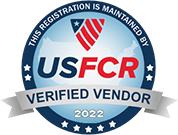The other day, I was on a call with a person who was describing to me a common “deer-in-the-headlights” situation. As an IT Manager, this person decided to move on from their simplified ticketing system to incorporate ITIL and Microsoft System Center Service Manager into the beginnings of a more mature IT Service Management solution for their company. After learning about ITIL and seeing SCSM for the first time, a paralyzing effect took place leaving this Manager unsure of where to begin.
I am familiar with this feeling, as I went through it myself at a former employer, when made the decision to switch from a simple, data-driven ticketing system to SCSM, which is process-driven. As the ITSM Admin, I not only needed to learn how to use , but also understand a new way of thinking, incorporating ITIL into our processes as well. Talk about drinking from the firehose!
Since this seems to be a common theme amongst maturing IT departments, I want to pass along a few tips to breaking the paralysis that comes from having to develop a game plan to take your ITSM strategy to the next level. I’m going to stick to the topics of ITIL and SCSM though at some point, I’d like to expand on how Cireson helps as well.
The most important tip is do not try to eat the entire cow in one bite. It is more than ok to begin focusing only on one or two ITIL components at a time such as Incidents and Service Requests and then take a grace period after implementation to design next steps. Also make sure to differentiate between what your company needs and what they may want and prioritize accordingly.
Take Time to Assess Where You Are and What You Need to Learn
It’s been my experience that you cannot begin to find the answers you need until you know the right questions. Take the time to learn what you don’t know. After a brief assessment period, I took what we were doing with ITSM as an organization and what we were tasked with doing and listed out questions that I needed to find answers to such as:
-
How will we utilize ITIL, and will we need to learn?
In answer to this question, I gathered materials and gained an understanding of the ITIL framework. Turns out, we were already using many components of it (such as Incident, Service Request, and Change Management)- they just weren’t structured efficiently, and workflows weren’t developed properly. Until that point, we called everything was ticket and the workflows for any given ticket type were entirely too fluid, making training new IT analysts a huge challenge.
The fix? I compiled a list of existing tickets and used what I learned about the differences between Incidents, Service Requests, and Change Requests to recategorize which ultimately led to the creation of a Service Catalog (more on that in a bit).
-
Management has chosen Microsoft System Center Service Manager as our new ITSM solution. Why SCSM and what do I need to learn to be able to administer it?
The choice to leverage SCSM came down to simple economics. We owned the licenses to the System Center Suite as part of our EA with Microsoft so there had to be a compelling reason not to leverage it and adopt a solution that would come with a more significant annual cost than either SCSM or what we were already paying for. The way our company was built, using any ITSM solution in a strictly out-of-the-box manner was not an option. The ITSM tool had to be flexible enough to evolve, and be shared with departments other than IT (being segmented when necessary).
Since the company evolved constantly, we agreed to have at least one full-time SME for ITSM rather than purchasing consulting for every change. SCSM has this flexibility especially when coupled with its integration with Orchestrator (for automation) and Configuration Manager (for computer management). It was up to me to learn its capabilities and take our business needs and ITIL to build something that would help us increase IT efficiency and be able to evolve with the business.
-
We want to offer our end users a Self-Service Portal. This requires a Service Catalog. What is a Service Catalog and how do I build it?
This was the question that stumped me the most. I had the textbook ITIL definition, but that really didn’t translate well since we weren’t an ITIL shop at that time. In working with our Level 1 Support Team, I realized that all I had to do was simplify the question and ask it another way: “What services do we supply as the IT Department to other business units?”.
It boiled down to, “We give them secure, networked computers with Operating Systems, software, Internet access, and accessories, and fix or replace them when they break.” From that answer, we had the top 2 Service Catalog categories, Give Things and Fix/Replace them. In ITIL parlance, we fulfill Service Requests and provide Incident/Problem resolution.
So that is where I started in building our Service Catalog. Working with Level 1 Support, we compiled a list of our existing tickets into an Excel spreadsheet and separated out what was an Incident or Problem and what was a Service Request (Change Requests were filtered out as we were focusing on business-facing components initially and we weren’t complex enough for Release Management). Using this method, we could categorize everything that the IT department provided and maintained for the business units.
Once I had the data, I needed to figure out how to format it to fit logically into the SCSM Service Catalog. The SCSM Service Catalog is the method by which the IT Service Catalog is presented to the business units via Self Service Portal. SCSM sets it up like this:
The bottom level is made up of Request Offerings. Request Offerings are basically forms that allow end users to request a specific service such as a new computer, software installation, or network resource access or report an incident involving those and more.
Request Offerings are grouped together in logical containers called Service Offerings. Service Offerings can be structured to group Request Offerings by Hardware vs Software vs Access Requests, regional or site based requests etc.
The top level consists of a list of Service Offering Categories. These can be broken down by service type such as Service Request or Incident report, department (if departments other than IT are going to use SCSM for Service Management as well), region, etc. In my instance we categorized this level by Department as we had other groups using SCSM as well such as HR, Facilities, Application Management, and so on.
It took some collaboration but using the spreadsheet we were able qualify, quantify and prioritize a working Service Catalog into a living document that we could build from and continually improve.
Get ITIL Buy-In from the Business
You can do a lot of work maturing your ITSM processes, only to find out that your business units aren’t on board because they have completely different views of IT services than you do. Everything I have described thus far has been prep work- but before you begin to build your roadmap for a better IT experience, you need to sit down with Management and make sure your goals are aligned.
It is very easy during this prep phase to forget that IT’s purpose is to provide value to the business. As an organization, IT typically does not generate revenue, however revenue is spent on IT. Everyone’s job in IT is to provide value for that money spent so it is critical that the services you have defined align with the needs of the business.
Keep the lines of communication open and continually collaborate with Management to ensure that what you are providing is what they need. This helps keep costs down and provides the business with confidence that it is getting the most value from IT.
This is also important when evaluating new technologies and services. Sometimes folks get dazzled by the next big thing and invest time and money before determining if the technology or service is warranted and how much value is there versus what you may have now.
It’s a Marathon, Not a Sprint
It’s time to circle back to one of the biggest contributors of paralysis when entering this endeavor which is trying to build it all…now. It’s been my experience that having absolutely everything built for go-live requires hundreds of hours of consulting to be budgeted and every possible contingency accounted for. That’s a lot of time and money – so enter your endeavor knowing you may not get everything right now. It’s best to start small and build on a solid foundation.
For example, many maturing IT organizations initially start with Incident Management. Once they have developed and implemented the services and supporting workflows for handling Incidents, they move on to Service Request fulfillment, then begin incorporating Change Management to minimize risks and provide accountability. Using Change Management, they can add new services, continually improve existing ones and retire those services that no longer provide value to the business.
Continual Service Improvement is one of the core tenets of ITIL. This is where you communicate with the business and begin to use trend analysis and reporting to tell you when services need improvement or retirement, or new services need to be introduced.
During this process, you will also most likely begin to incorporate automation into your existing processes. Automation will increase efficiency by cutting down on time spent doing menial tasks that are part of the workflow- and time is money. Automation comes in many forms from very simple to complex. SCSM provides many different types of automation capabilities such as:
- Work Item Templates to auto-fill fields based on the type Request or Incident
- Notification subscriptions for end users and Analysts
- Workflow capability to set fields automatically based on data in other fields
If you really want to take automation to the next level, you can leverage the integration between SCSM and System Center Orchestrator. SCSM provides the ability to kick off runbooks, passing in data from a work item as part of an Activity workflow. The Service Manager Integration Pack in Orchestrator also can monitor work items for specific changes or settings and pass that data into a runbook as well. With Orchestrator, your options for automation are virtually unlimited.
Incorporating ITIL, a Service Catalog, and SCSM into your IT Service Management daily life does come with its challenges but these challenges are surmountable with time, learning and patience. In the end, I have found that the journey is worth it and the value to the business will be easily demonstrated.




